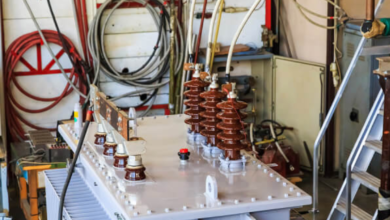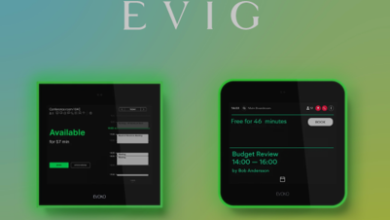Pioneering Workplace Safety in Melbourne: The Future of Noise Assessment and Audiometric Testing

In Australia’s rapidly evolving industrial environment, the protection of employees is becoming more sophisticated and no longer just a tick-box for compliance. In Melbourne, progressive employers are adopting a revolutionary model for workplace noise assessment and audiometric testing that works on ‘whole-of-safety’ principles. By integrating active noise dosimetry and individualized hearing health assessments, businesses are going beyond compliance, turning risk mitigation into a competitive advantage for organizational productivity and employee health.
From Snapshots to Real-Time Monitoring
Traditional assessments of occupational noise exposure have relied on manual periodic monitoring, which provides a rudimentary overview of the situation. In Melbourne’s diverse work environments, from bustling construction sites to advanced manufacturing plants, this approach often fails to consider the dynamic nature of noise levels that are vital to worker health. Industry leaders today are investing in comprehensive noise measurement systems that provide continuous, real-time data.
These systems utilize sophisticated sensors and Internet of Things (IoT) technologies to automate sound level monitoring 24 hours a day. With real-time data streaming into dashboards, risk managers based in Melbourne are able to react to noise surges with precise, pre-calculated interventions. This approach automates safety management, transforming it from a responsive reaction to an action procedure that alleviates risks upon detection. In an environment where change is constant, gaining the ability to monitor noise continuously becomes a significant competitive edge.
While continuous monitoring of noise provides useful information about the conditions in the environment, its effectiveness in cross-bred strategies with regular audiometric testing Melbourne gets enhanced. Industries with high levels of noise exposure in Melbourne are now incorporating personalized hearing tests into their advanced protective measures. Instead of conducting annual pass/fail tests, companies systematically take these through continuous monitoring and sculpt a cohesive picture of individual hearing health.
Through the integration of audiometric tests and real-time noise monitoring, companies are able to measure the sound exposure to their employees and determine any possible impacts on their hearing. This approach allows safety personnel to take timely actions towards hearing loss risks. Such actions may include increasing the level and type of personal protective equipment provided, changing work processes, or reorganizing workflows to limit harmful exposures to the workers. Thus, these companies from Melbourne not only focus on workforce protection, but also on fostering a culture of proactive health surveillance with tailored risk mitigation strategies.
With the Help of New Technology for Advanced Risk Management
In Melbourne, the assessment of noise and audiometric testing is undergoing changes with the introduction of new technology. New software for risk management has been developed that enables the assessment of data in real time, with predictive analytics and health monitoring being integrated into one platform. These new technologies allow leaders to analyze emerging data and monitor changes and trends to plan and modify their response efficiently.
A singular centralized digital system can collect and integrate background noise data with outcomes of audiometric tests for further analysis. Analytics can predict upsurges in certain areas and timelines, allowing safety managers to take proactive steps to fix issues before implementation. With the information being collected, companies in Melbourne are shifting their approaches with data from a reactive “fix it when it breaks” attitude to one where issues are prevented before they arise. This proactive risk management #{excuse the typo, or keep if you want} mitigates incidents, maximizes incident rates, and enhances productivity and operational efficiency.
Encouraging a Cultural Shift in Creativity
Through proactive noise assessment and audiometric testing, there’s an increasing focus dedicated towards continuous improvement within Melbourne’s workplaces. Employees aren’t passive participants who receive tests over some time; they are active engaging users of the company’s health and safety programs. Participative methods integrated in the form of feedback that is encouraged and provided digitally or in team safety meetings motivates the workers to engage more with the data, bringing numerous ideas on how to improve.
Such an approach fosters responsibility within the organization mask employees on all levels. Once individuals understand the impact of their actions on actual noise levels and hearing health, they become more likely to adhere to best practices and contribute to innovative solutions. This continuous improvement culture not only promotes better health at work but also enables a company to dynamically adapt to change and evolve over time fostering resiliency in the organization. This is becoming an emerging mindset in workplace safety, operational excellence and poses scope Melbourne’s along with his other Australian cities.
Investing to make Melbourne Safer
This is the intent of industry leaders in Melbourne who seek long-term growth through the adoption of new advanced safety technologies as the rest of Australia’s regulatory system and their operational processes change. Applying automated noise surveillance alongside tailored audiometric exams is not done just for compliance; it is for sustainable business development. Organizations adopting safety responsiveness technologies are fortifying their operational stamina to ensure they face challenges with no resource constraints.
Melbourne based organizations now face a choice: stick to old standards for workplace safety, or adopt an integrated, data-centered strategy for occupational health that sets a new benchmark. With the globalized competitive environment and Melbourne’s business market, there is no time to waste when it comes to looking after the well-being of employees to help increase their productivity, decrease downtime, and improve performance in the market.
Conclusion
In Melbourne, the future of workplace safety is evolving with the modern approach to noise assessment and audiometric testing. Moving away from conventional, periodic checks to continuous monitoring of data allows organizations to turn compliance into a strategic advantage. This integration not only improves employee health but also boosts operational efficiency, promoting long-term growth while guarding against economic shifts. This ensures that workplaces in Melbourne remain competitive and prepared for the future in the fast-evolving industrial environment.





